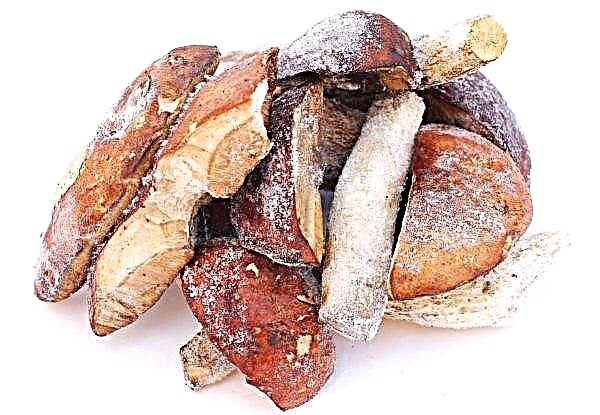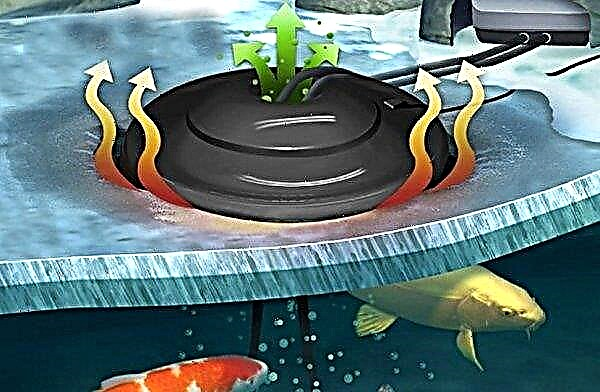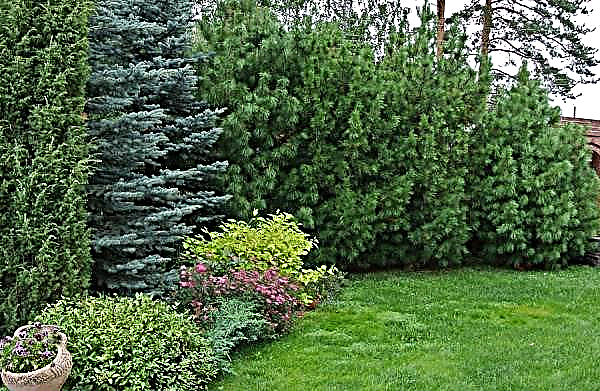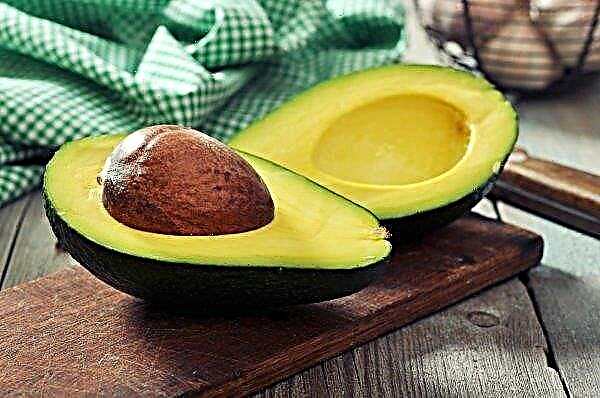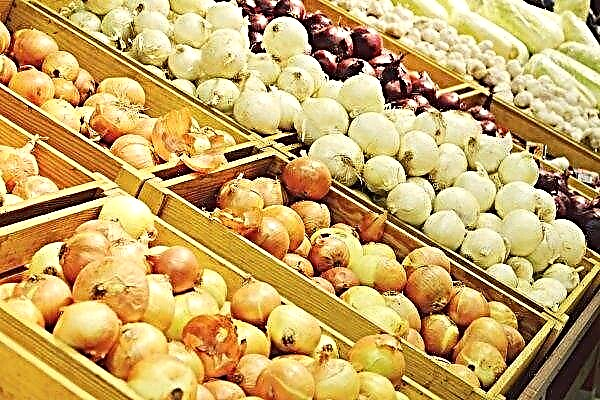The question of how to efficiently arrange the beds in the greenhouse arises before everyone who has decided on this method of growing garden crops. Modern agricultural science has developed several theories on how to effectively use the greenhouse space. Learn more about them.
Types of Greenhouse Beds
Depending on how it turns out to fill the space of the greenhouse, the beds are distinguished:
- ground, located on the ground;
- shelving, located in boxes.

Depending on how the breakdown is carried out, allocate:
- wide rows, between which a narrow passage;
- middle rows with a passage whose width allows you to move freely;
- narrow rows with sides and a wide passage along the Mitlider;
- narrow raised (warm) beds-boxes according to Lyadov;
- rows up to 40 cm wide with a distance of 50–80 cm according to Pikalevsky;
- original ones.
Did you know? There are also greenhouses in the Sahara desert, but they protect plants not from the cold, but from the heat.
There are such types of original design of rows:
- in the form of a pyramid;
- vertical
- French
- warm;
- "Bosquet".
Pyramid beds
Pyramidal beds can be issued in 2 options:
- Little. A large diameter pipe is installed and sprinkled with earth in the form of a slide. Along the pipe on both sides in the form of steps, it is necessary to strengthen the crops planted in rectangular boxes.
- Big. Four rectangular rows of the same size are connected in the form of a square. The next 4 rows should have a length of 20 cm less than the first, they are also connected into a square and placed inside the previous square in the form of a step leading to a height, etc.

Vertical
Vertical stripes, like pyramidal, are set in the form of steps, but on the one hand. In addition, there are options for planting crops in a vertically mounted pipe with drilled holes for their growth. You can also plant plants in "pockets" of insulation, sewn in rows on the base.
French
French beds resemble pizza in shape - they are a circle that is divided into sectors, like pizza into pieces. In each sector, you can plant different types of plants. Between sectors pass borders or paths that are directed from the center of the circle to the outside. Such beds will be the best option for round greenhouses or in the form of a dome.

Warm beds
Warm beds are a method of growing plants that involves warming the soil.
Depending on which method of insulation is selected, distinguish:Did you know? In the Netherlands, they are developing a project to use the excess heat that is generated in greenhouses for heating residential buildings, and condensate for drinking water.
- Soil insulation at depth.
- Warming due to the build-up of the soil layer.
- Combining the two previous options.
- Growing using this option has three advantages:
- You can get a crop earlier;
- in larger numbers;
- protect it from pests and diseases.

Beds like "Bosquet"
“Bosquet” - beds are a derivative form of the French type. In this case, the landing area should not be divided into sectors, but into parts of the same arbitrary shape - circles, hexagons, squares, rectangles, etc.
The basic principles of creating beds
The selection of a suitable greenhouse design option should be based on:
- lane size;
- an idea of how many there will be;
- attitude to the cardinal points;
- types of crops to be cultivated.
Important! Ideally, you must first plan the internal structure of the greenhouse and the crops grown, and then determine the size and shape of the greenhouse.
The width and height of the beds
The breakdown into strips is carried out on the basis of the following principles:
- In the process of caring for the garden bed, you can not step on it, so the outermost rows should not be wider than 50 cm, and the central ones - 120 cm.
- The optimal width of the aisles is 50-60 cm, this width will allow better use of space. Narrower passages will not allow normal progress, since overgrown plants will hang over them.
- The number of rows in the garden should allow quality care for crops, and plants in adjacent rows should not interfere with each other's growth. Ideally, the planting width should be 25-30 cm, but it all depends on the type of crop.
Planning strips in a finished greenhouse depends on its size. The most common size is 3 by 6 m - this is the standard size of polycarbonate greenhouses, associated with the dimensions of polycarbonate sheets. In this case, it is possible to arrange 2 narrow strips of 0.5 m along the edges and a strip 1 m wide between them. Then there will be 2 50-centimeter passes. If you make a strip perpendicular to them opposite the entrance, you can form an inverted letter S.
Video: How to arrange beds in a greenhouse
The height of the rows can be as follows:
- Flush with the ground or up to 10 cm for soil, which has a good level of fertility, low groundwater, suitable composition for this crop.
- Up to 30 cm, if you plan to grow plants in which the root system is located close to the surface, there is a high level of groundwater, the soil is characterized by a poor composition.
- Up to 60 cm, if the soil is very poor, the groundwater level is very high, root crops are planned to be grown.
The same approach can be applied to greenhouses measuring 3 by 4 or 3 by 8 m.
Reasonable use of the vertical
You can increase the efficiency of using space by filling the volume:
- Place shelving. If you equip the beds, shelves up to 50 cm wide, you can grow seedlings on the upper shelves, and store tools under the lower shelves. It is only necessary to ensure that there is sufficient distance between the racks for the growth of cultures, access to light, and care for them.
- Hang the containers for growing to the ceiling. The suspension cable must be strong and long so that the plants do not fall and burn near the top of the greenhouse.
- Make vertical beds or pyramid beds described above.
Important! All of the above methods of vertical filling of the greenhouse lead to accelerated drying of the earthen coma, so planting needs more frequent watering.
Such options are suitable for annual crops, the root system of which grows slightly.
We make warm beds
Warm beds allow you to get the effect of a greenhouse.
For their arrangement:
- Mark the boundaries of the future beds.
- If you are planning an in-depth or combined version of insulation, dig a hole 70 cm deep for the first and 45 cm for the second option, if not, equip the walls with a height of about 70 cm.
- The bottom layer will be a grid with small holes through which rodents cannot crawl.
- Make a drainage of sand, fine stone or pieces of brick.
- On a thickness of 20 cm, lay out thick branches, pieces of wood.
- On a thickness of up to 10 cm, lay out small branches, sawdust.
- On a thickness of up to 5 cm, lay the leaves, grass, turf, straw, squeeze well.
- At a thickness of 20 cm, lay humus, vegetable waste (excluding tomatoes and potatoes), compost, bird droppings.
- Lay the soil mixture suitable for growing the type of crop that you have planned.

Warm beds require careful crop rotation:
- first year plant on them watermelons, melons, pumpkins, zucchini;
- the second - zucchini, tomatoes, cabbage, cucumbers;
- the third - onions, carrots, radishes, potatoes;
- the fourth - legumes, greens;
- fifth - rebuild.
What to make fences for beds
Fencing for rows can be made of the following materials:
- Boards - the shortcoming is fragility, the ability to be affected by fungi and serve as a shelter for pests, but they are cheap and quickly installed.
- Brick - the disadvantage is the high cost, the high cost of time and effort to install.
- Slate - its appearance is not particularly attractive, it can emit harmful substances, brittle, has sharp edges, heats up very much, but durable.
- Polycarbonate - high cost, can be deformed.
- Zinc Plated Metals - have a high cost, can be very hot, but at the same time durable and easy to install.
How to properly position the beds relative to the cardinal points
Orientation to the cardinal points should be as follows:
- For a set of small crops, north-south is best.
- For those who can obscure each other - east-west.

Thus, even in a small greenhouse you can increase the yield if you carefully consider the arrangement of the rows and fill its volume as efficiently as possible. A clear answer to the question of how to do this in your particular case does not exist, it is a matter of personal preference. We hope that our recommendations will inspire you to choose the option that will satisfy you.



